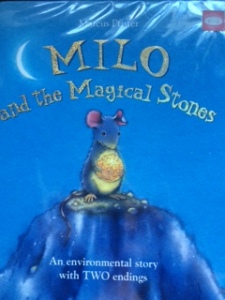Discover the secret life of bees from queens to the waggle dance, hives and honey.
Have you ever wondered about how your flowers grow so brightly or perhaps how tomatoes grow so rapidly or even how weeds seem to appear all over your garden without the slightest hint of a breeze?

Well, wonder no more – Being a bee by Jinny Johnson and Lucy Davey explains the many facets of a bee through simple explanation and colourful illustrations.
In this lively book children will love learning about bees. They will be introduced to the delightful queen bee and then shown how the babies are fed and grown in the hive alongside where honey is kept for safekeeping.
We learn how and why bees to a waggle dance and how important it is for them to work together as a team.
The section on beekeeping was eye opening and helped us to really appreciate the tub of honey we have sitting in our cupboard.
The flat design illustrations abound with green and yellow and flashes of colourful flowers – which without bees would be no more.
Being a bee is a great way to introduce your young reader to the importance of bees and the valuable role they play in our society. There is a lot of news in the media at the moment about the need to bring bees back.
So what can you do at home or at school with this book?
- Have a look around your home and see what would entice any type of insect to your area? all insects are beneficial and attracting them to something they can live off or eat is important. It’s better they live off the plants than things in your house!
- PROJECT: How can we provide the best home for attracting bees? Investigate what the bees (local to your area) need. Draw up a plan of what the hive would look like, where it should be placed, what conditions it needs to attract bees and to survive. (This project includes outcome links to mathematics, literacy, science and geography)
- Herbs are an easy plant to start with as they can be grown in small planter boxes on windowsills – give rosemary, thyme or mint a go.
- It is important that you find out about the beneficial flowers that help bees in your area too. Australian stingless bees love:
| Abelia x grandiflora | Abelia |
| Buddleja * | Butterfly Bush |
| Callistemon | Bottlebrush |
| Eucalyptus | Gum Blossom |
| Grevillea | Spider Flower |
| Lavandula | Lavender |
| Leptospermum | Tea Tree |
| Melaleuca | Honey Myrtle |
| Westringia | Rosemary |
| Many Varieties | Daisies |
- See my older posts about bees and link in some of those ideas to this book.
- Find some more books that have bees in them – you’ll bee surprised! Do these stories all have a similar message to tell?
- Compare scientific literature to children books that are on the topic of bees. Why do we need both types of literature out there to understand the need for bees in our world? Create your own bee themed picture book based on some scientific literature.
- Create your own story about your adventure with a bee. Which flowers would you like to visit? Divide a page into four sections and draw a series of pictures that show what you would like to do with a bee to make sure there are enough flowers, fruits and vegetables in the world.
How is honey used in our lives apart from to eat? Investigate the different properties of honey and how it is used in a myriad of products!
Where are bees located? What type of environment do they need to thrive? Create a honey bee and a stingless bee map of Australia.
Why are honey bee hives made out of hexagonal shapes?
Why do stingless bee hives spiral shaped?
Investigate the different shapes of bee hives across the globe and why they are this shape. Could they be another shape? Investigate if there is a better way to keep honey in a hive.


